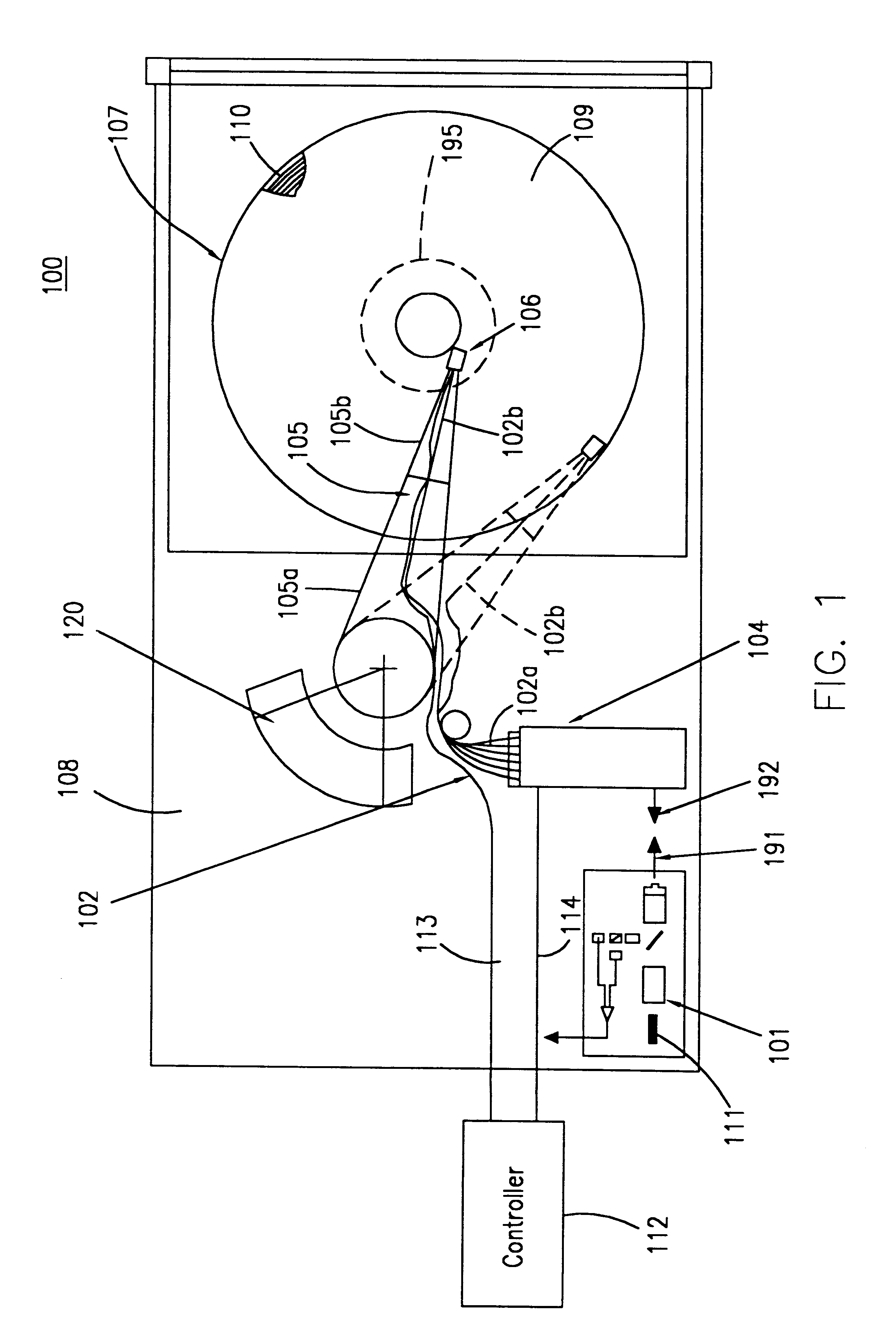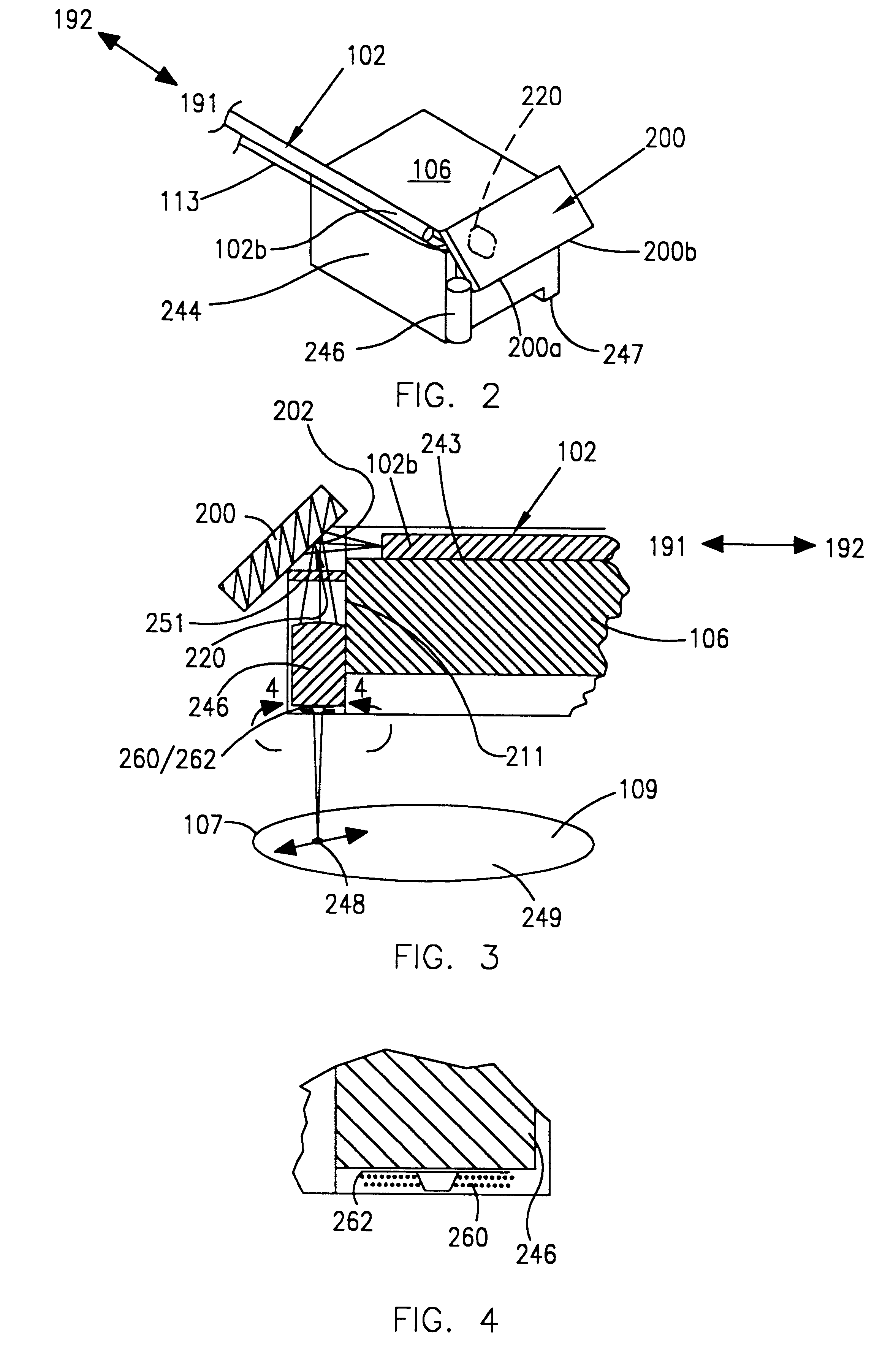Method for processing a plurality of micro-machined mirror assemblies
- Summary
- Abstract
- Description
- Claims
- Application Information
AI Technical Summary
Benefits of technology
Problems solved by technology
Method used
Image
Examples
Embodiment Construction
Referring in detail now to the drawings wherein similar parts of the invention are identified by like reference numerals, there is seen in FIG. 1 a diagram showing a magneto-optical data storage and retrieval system. In a preferred embodiment, magneto-optical (MO) data storage and retrieval system 100 includes a set of Winchester-type flying heads 106 that are adapted for use with a set of double-sided magneto-optical disks 107, one flying head for each MO disk surface. MO disks 107 are rotatably carried in a stack by a support body 108 and for simplicity only one of the disks 107 is shown in FIG. 1. In a preferred embodiment, a set of six disks 107 are provided in a stack. Each side of a disk 107 has a planar storage surface 109 provided with a plurality of concentrically disposed data tracks 110 thereon. For simplicity, only several of the data tracks 110 are shown in FIG. 1 and have been enlarged relative to the size of disk 107 for permitting visualization thereof.
The set of fly...
PUM
 Login to View More
Login to View More Abstract
Description
Claims
Application Information
 Login to View More
Login to View More - R&D
- Intellectual Property
- Life Sciences
- Materials
- Tech Scout
- Unparalleled Data Quality
- Higher Quality Content
- 60% Fewer Hallucinations
Browse by: Latest US Patents, China's latest patents, Technical Efficacy Thesaurus, Application Domain, Technology Topic, Popular Technical Reports.
© 2025 PatSnap. All rights reserved.Legal|Privacy policy|Modern Slavery Act Transparency Statement|Sitemap|About US| Contact US: help@patsnap.com



